The topic of booby traps is normally confined to discussions within police bomb squads and military explosive ordnance disposal (EOD) teams. Unfortunately, these discussions often happen after a device has been triggered and someone is dead or severely injured. This should not be the case. Officers and investigators all agree upon the importance of situational awareness when contacting suspicious individuals. Likewise, we must agree upon the significance of booby trap awareness for police officers. In this area, one misstep could be tragic.
In this article, I define the term booby trap, discuss various types of triggering mechanisms and delineate a method for officers and investigators to determine if a suspect may be apt to use them. This article does not focus on “render-safe procedures.” Those operations must be conducted by qualified bomb technicians. Instead, my focus is on indicators that will be informative for officers and investigators as we conduct investigations and plan enforcement operations.
What Are Booby Traps?
Booby traps are objects that appear to be normal but, in fact, conceal a device designed to signal an intrusion, destroy evidence, maim or kill. Booby traps can be as simple as a board with upturned nails or as complicated as an improvised explosive device (IED) filled with homemade explosives initiated by a laser trip wire. For the purposes of this article, I’ll focus primarily on explosive devices since they have the potential to create mass casualties and extensive property damage.
While we often think of booby traps in the context of protecting marijuana “grows” and methamphetamine labs, we must not forget many of them have been used outside that context. Unfortunately, many officers have died during these discoveries. Prior to his conviction in 2011, Nicholas Smit conducted a series of booby trap attacks against law enforcement in Hemet, Calif. One device was made from a series of boards with dozens of upward-facing nails. In another attack, a natural gas pipe was pushed into a hole drilled through the roof of the Gang Enforcement Unit’s headquarters. Fortunately, the gas was detected before anyone was hurt. An officer was targeted again when a car bomb (which did not detonate) was placed on his vehicle. In another attack, a handmade firearm was attached to a gate at the Gang Enforcement Unit’s building. The device functioned and nearly struck an officer when he entered the gate. Smit was sentenced to four consecutive life sentences.
There is no better way to establish a pattern of life than to follow the suspect and see who he meets, what he buys, where he illegally dumps his trash and where he lays his head.
While no officers were injured in the Hemet attacks, others were not so fortunate. Trooper James Fulford of the Florida Highway Patrol was killed instantly on Feb. 1, 1992, during a traffic stop near Tallahassee. Investigation revealed the explosion happened when he lifted a gift-wrapped microwave oven containing a bomb from the trunk of a car.
Sheriff Charles LaRew of Cedar County, Mo., was shot and killed in 1987 by a booby trap device while investigating a residential burglary report. The device was rigged to fire a projectile when the victim turned the doorknob. ″When he turned the knob, it (the string) pulled the trigger,″ Cedar County Coroner Clarence E. Hackleman said. ″He probably didn’t even hear the gunshot.”
Booby traps factor in more recent incidents, too. In 2017, a Michigan officer climbed a fence during a medical marijuana grow site investigation and landed on a booby trap. The trap was a piece of plywood with over 100 upturned three-inch screws. Several of the screws penetrated the officer’s feet and he was seriously injured.
In 2018, four Oklahoma troopers were injured during the service of a search warrant. Oklahoma Highway Patrol Capt. Paul Timmons said, “As soon as they made entry, they were met by gunfire” and that authorities are “fairly certain” the man had surveillance cameras set up. In addition to the gunfire, a fire broke out immediately after the officers tried to execute the warrant. “We suspect that the building may have been booby-trapped with some type of explosive device that maybe started the fire,” Timmons said.
Also in 2018, Oregon bomb technicians and FBI agents were injured when a booby-trapped wheelchair exploded as they searched the home of Gregory Rodvelt. Investigators found additional booby traps throughout the 15-acre property, including spike strips in the driveway and a rat trap designed to fire a shotgun round when some someone tried to open the door to a detached garage. The oddest trap of all was a hot tub that “was rigged in such a manner that when the gate was opened it would activate a mechanical trigger that would cause the spa to roll towards the person at the gate.”
We still need to look for outdoor marijuana grows and track fugitives through the woods. We still need to search hotel rooms for meth labs and houses for emotionally disturbed people. The solution, as always, is preparation.
Due to the ingenious nature of booby traps, detection can be exceedingly difficult. This difficulty is compounded during rapidly evolving situations in low-light environments. Foreknowledge is the key. If officers have time to gather intelligence on the suspect and understand possible triggering mechanisms, it will give them an edge that may save their life.
Trigger Mechanisms
As you read this article, ask yourself, “What have I picked up during an investigation that could have been booby trapped?” The honest answer is basically anything. Booby traps are not confined to trip wires and punji pits on a trail in the woods. We must never supplant a bomber’s methodology or thought processes with our own. The fact that we would not do it “that way” means nothing to the bomber. The adversary is not bound by the National Electrical Code or conventional methods when designing his circuits or disguising his devices. He is only limited by his imagination. Remember the nationwide murder campaign Ted Kaczynski conducted from a wilderness cabin with no running water.
There are several types of triggering mechanisms that can used to initiate booby traps:
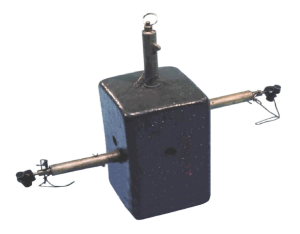
Release – Trip wires may also be configured in a release mode. This type of trigger can be initiated when a taut trip wire is cut. The sudden release of tension allows a suspended contact to touch another contact and complete a circuit. The learning point here: Never cut a trip wire.
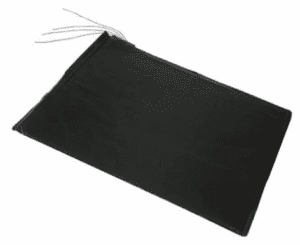
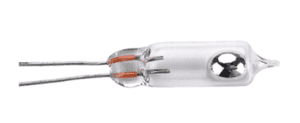
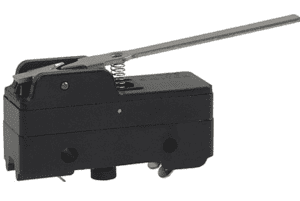
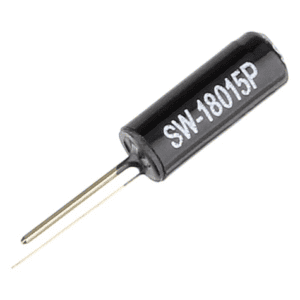
Electronic Sensors – This category of switches is the most concerning. In the past, these switches were difficult to obtain and expensive. Now, they are readily available in kits sold on the internet. These switches include infrared sensors that detect electromagnetic radiation that we perceive as heat, proximity sensors that trigger when a person nears the device, and laser switches that act as invisible trip wires. These sensors make detection exceedingly difficult. The weakness of electronic sensors lies in their need for a constant power source.
Keeping Officers Safe
So, what is the solution? The show must go on; we still need to look for outdoor marijuana grows and track fugitives through the woods. We still need to search hotel rooms for meth labs and houses for emotionally disturbed people. The solution, as always, is preparation. Just as we gather intelligence for other operations, we must now expand our scope to consider the possibility of booby traps.
Following are six strategies for expanding booby trap awareness for police officers:
- “Pre-brief” current undercover operators and informants. A quick overview of bomb-making materials will help operatives stay alert to suspect signs. For example, an officer who observes a coffee grinder containing white powder residue inside a garage should pay close attention. The officer should ask, what is this and why is it here? Likewise, if he observes a beaker in an ice bath in a backyard shed, it should raise his suspicion. . The Office of Bombing Prevention’s Bomb-Making Materials Awareness Program is an excellent source for pre-brief information. Additionally, officers can attend free virtual instructor-led training through the Center for Domestic Preparedness Homemade Explosives Awareness and Precursor Awareness Course (HME-P AWR-338).
- Debrief informants and undercover operators who have been in the suspect’s residence or on his property. Did they see evidence of bomb making? Were there electronic components on the kitchen table? Were there kitchen appliances such as crock pots or hot pads in the garage workshop? Such signs may indicate the suspect is building circuits or processing common substances for use as explosive precursors.
- Conduct research to determine if the suspect has capabilities or proclivities that might indicate his ability to use booby traps. While all military veterans have some familiarity with explosives, certain military occupational specialties have advanced training. These include Combat Engineers (12B), Special Forces Engineers (18C) and Explosive Ordnance Disposal Specialists (89D). Individuals with college degrees or work experience in the field of chemical engineering or electronics are also fully capable of combining explosive precursors and assembling electronic circuits. Sadly, even with no specialized training, anyone with access to YouTube can learn to make explosive or incendiary devices via step-by-step videos.
- Analyze past statements made by the suspect to determine if he is apt to favor explosives. These statements could be gleaned from past law enforcement interviews or calls for service, threats to neighbors, employment exit interviews, court proceedings, protest activities and social media posts. Officers should research the suspect’s criminal history and interview subjects who have been affiliated with him in the past.
- Continue to use the tried-and-true methods of eyes-on surveillance and trash pulls. There is no better way to establish a pattern of life than to follow the suspect and see who he meets, what he buys, where he illegally dumps his trash and where he lays his head. Trash pulls can be useful in not only obtaining probable cause for a search warrant but for determining if the suspect may be constructing an IED. If an officer finds wire clippings, matchsticks with the heads cut off, peroxide bottles, acetone bottles and acid bottles, there is a strong chance the suspect is mixing homemade explosives. There are some chemicals that are found in both meth labs and bomb labs. Either way, forewarned is forearmed.
- Prepare for the search. If your investigation has led to the conclusion that your suspect may use booby traps, enlist the assistance of bomb squad technicians. If the area is wooded, look for trails that narrow and force you into a “choke point.” If possible, avoid trails and move to the objective in a way that is unexpected. Tall weeds, fallen leaves and hanging vines provide natural camouflage for triggers such as trip wires and pressure plates. Look for impressions in the ground or freshly dug earth that may indicate buried devices. Look for trip wires, either taut or slack. These may positioned at any height but are hardest to see at ankle level. They could be made of wire, fishing line or simple thread. Wire and fishing line may be easier to see in the early morning since dew will collect on them.
A comprehensive understanding of booby traps is beyond the training of most officers, but focusing on basic booby trap awareness for police officers can pay dividends. As you conduct future investigations, I hope you’ll remember that booby traps can be found almost anywhere. The key to avoiding tragedy is improving situational awareness and mining all available sources of information before beginning the search. Stay safe.